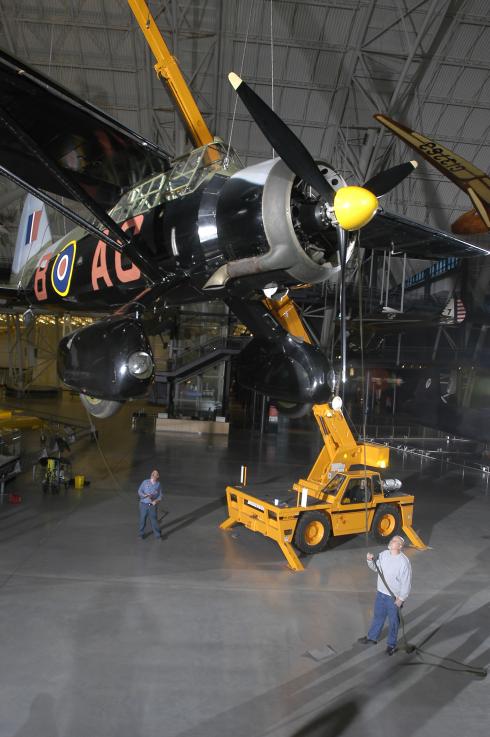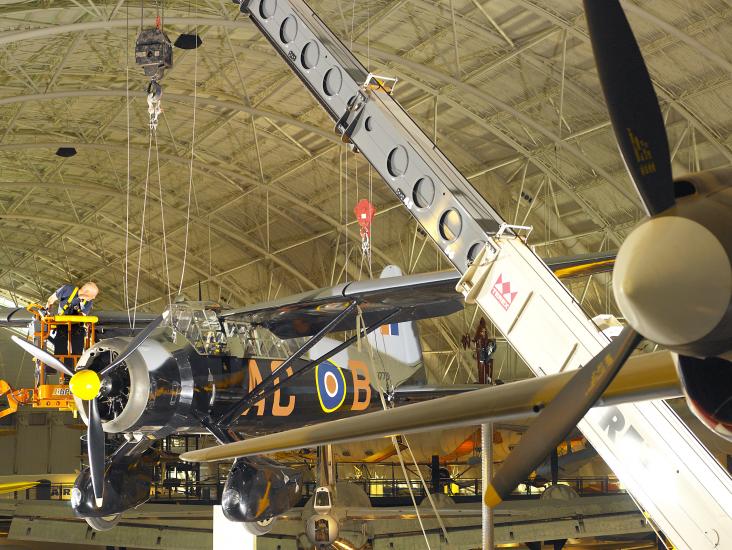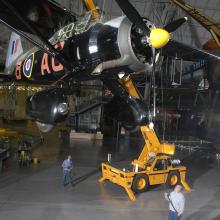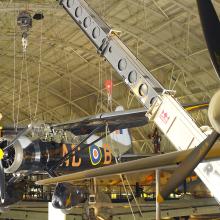Unusual World War II Spy Plane Now on Display at National Air and Space Museum's Udvar-Hazy Center

Media Inquiries
Public Inquiries
One of history's oddest looking and most mysterious spy planes can now be seen at the National Air and Space Museum's Steven F. Udvar-Hazy Center in Chantilly, Va.
The Westland Lysander IIIA carried out multiple missions throughout World War II, most notably ferrying British spies in and out of occupied France. Designed to take off and land in places not recognized as air fields, the Lysander was flown into small, unlit pastures in support of the French Resistance.
The airplane bucked the aeronautical trend of the day, shunning a sleek design and ever-higher speeds for wooden, fabric-covered wings above the canopy and large, bulbous fixed landing gear. While slow and lightly armed, the Lysander could operate comfortably even from forest clearings.
The unusual qualities of the Lysander came directly from the Royal Air Force (RAF) squadrons that were to use the plane. Prior to designing the craft, Westland Aircraft of England surveyed RAF pilots and built the plane based on the pilots' requests. Westland delivered 169 of the aircraft to the RAF in September 1939.
The Lysander joins other significant World War II aircraft at the Udvar-Hazy Center, including the Curtiss P-40 Warhawk, Lockheed P-38J Lightning, Vought F4U Corsair and the Boeing B-29 Superfortress "Enola Gay."
The Steven F. Udvar-Hazy Center is located in Chantilly, Va., off of Route 28 near Washington Dulles International Airport. It is open daily from 10 a.m. until 5:30 p.m. (closed Dec. 25). Admission to the Udvar-Hazy Center is free, but there is a $12 fee for parking.



